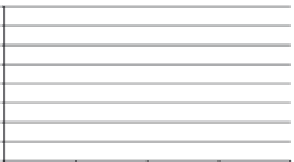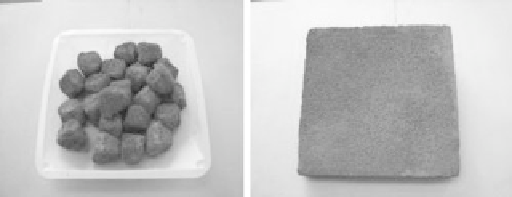Environmental Engineering Reference
In-Depth Information
Column with granules
Monolith media
1
1
12
8
7
6
5
4
3
2
1
0
0
50
100
150
200
250
0
150
Days from start of experiment
50
100
200
Days
Influent soluble
Euent soluble
Influent soluble
Euent soluble
FIGURE 31.10
Longer term column testing using septic water.
31.4.3.2 Key Factors in Using Media in System
Meta-PO4 media can be made in different shapes (e.g., cubes and plates shown in Figure
31.11), and this can affect considerations in packaging media for use. Beds can contain
pieces of media of different size, solid monoliths or combinations.
Time of water in contact with the phosphorus removal media is a major consideration
when using any media, as well as the concentration gradient and the low rate past the
media (lux). It is desirable to have the EBCT to be 30 min or longer. For lower concentra-
tions of phosphorus, an ECBT of 1 h or longer is preferred. Phosphorus uptake for this
media appears to be following a irst-order adsorption mechanism, and the EBCT depends
on the diffusion of the phosphorus from the bulk liquid.
To enhance performance of the media, circulation of the water by the surface of the
media shows improved removal of phosphorus. Circulation has been examined in several
ways, and all improve performance. Water can be circulated through the design of water
inlet, through use of airlifts, or through pumps. The ratio of media to water is impor-
tant, as can be seen in Figure 31.12 by comparing ratios of 100 g of media per liter of
water. Circulation helps mitigate channeling or bypass of media, which is important when
using larger pieces such as the cubes (Figure 31.11). For monoliths packaged into a column,
recirculation is less important. In general, a 30 min EBCT will lower phosphorus from
10 mg/L to <1 mg/L. Polishing ilters can be used to lower concentration further (<0.1
mg/L). Testing shows that phosphorus can be dropped from >100 mg/L to <1 mg/L within
an hour.
FIGURE 31.11
Media shapes.






















